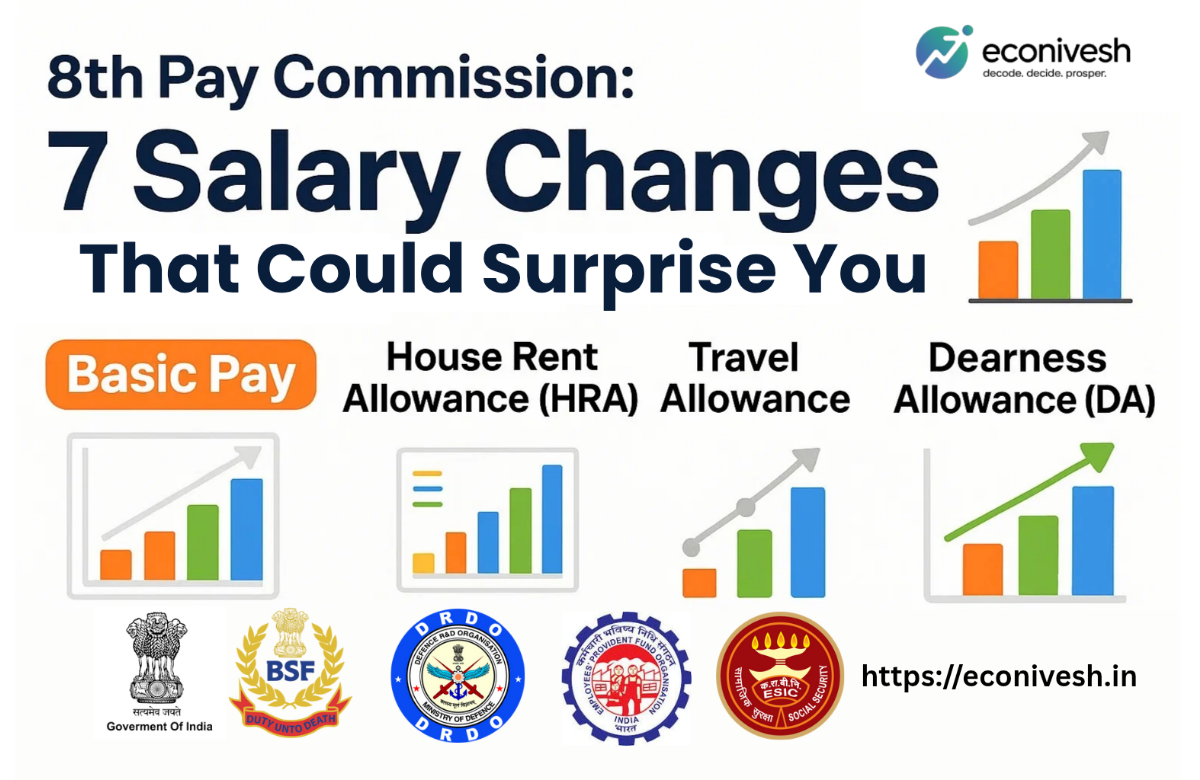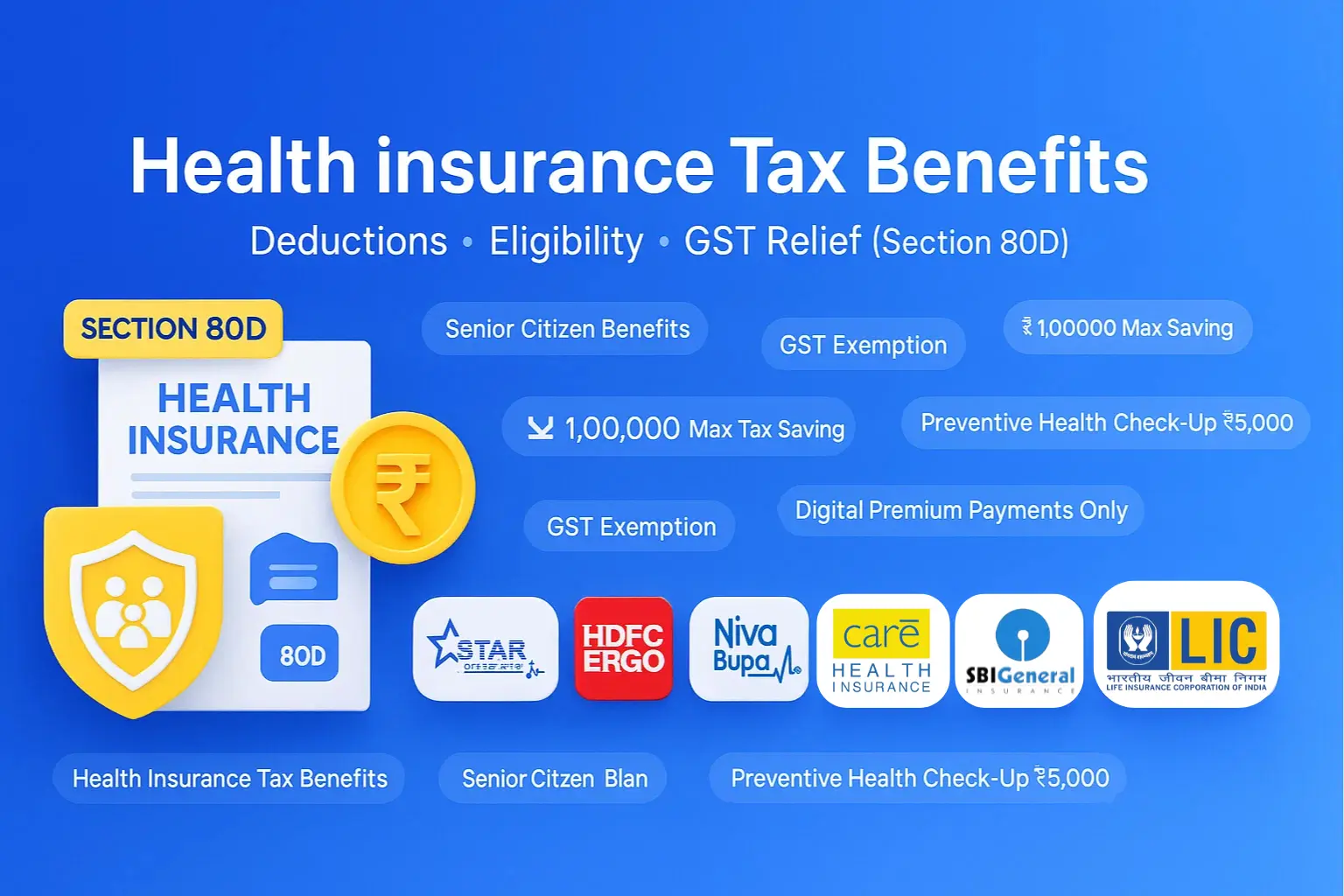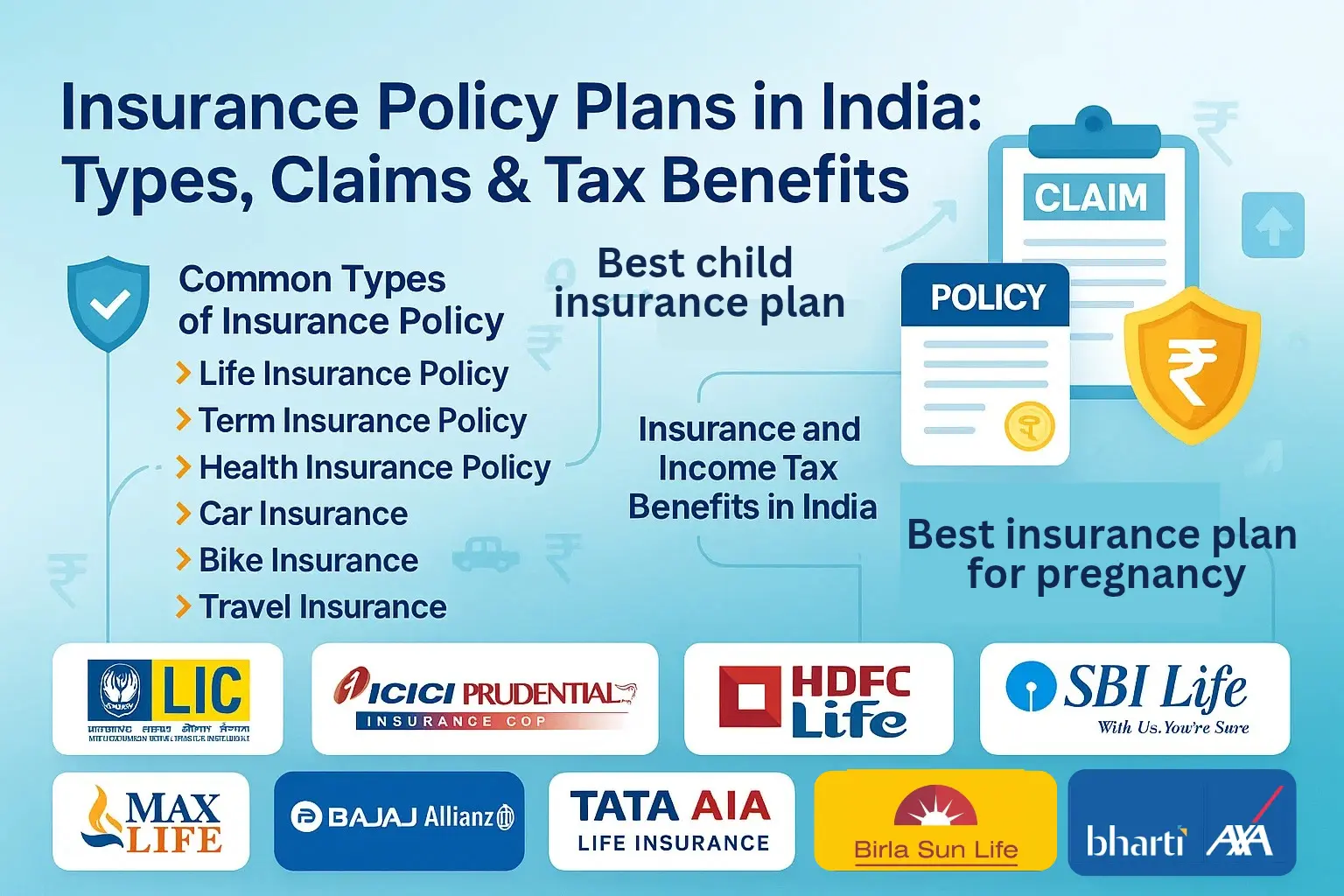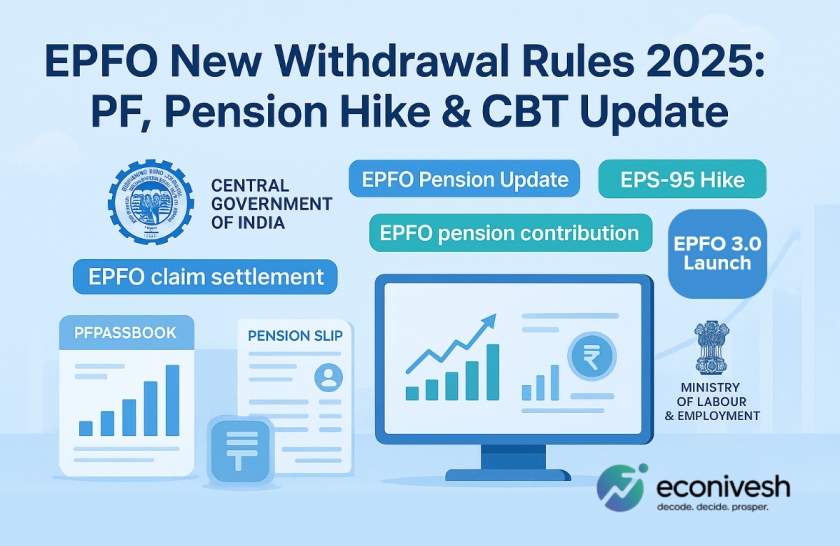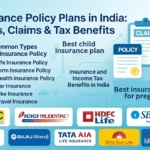The 8th Central Pay Commission is on track to introduce a substantial revision to the salary, pension, and allowance system for over 49 lakh central government employees and 65 lakh pensioners in India.
Following the implementation of the 7th Pay Commission on January 1, 2016, the next review is projected to commence in January 2026, thus continuing the established 10-year cycle of pay revisions.
Approved by the Union Cabinet in January 2025, the 8th Pay Commission will suggest a higher fitment factor to adjust basic pay and update critical allowances such as Dearness Allowance (DA) and House Rent Allowance (HRA).
Its prompt formation ensures a smooth transition, preventing a pay freeze and raising hopes for considerable financial benefits across all government sectors.
Formation and Timeline
India typically sets up a Pay Commission every decade to evaluate and modify salaries. The 8th Pay Commission received official approval from the Union Cabinet on January 16, 2025. The specific start date, which includes appointing the chairperson and defining the Terms of Reference, was expected to be in early 2025.
The Commission’s recommendations are projected to be finalized and enacted between 2026 and 2028, with any salary arrears likely to be credited retroactively from January 1, 2026. The Finance Ministry will only announce the new pay scales after the panel submits its report and it is approved by the government. Consequently, employees can anticipate a revised pay structure in 2026 while being aware that the final rollout may be influenced by official timelines.
Table of Contents
Expected Fitment Factor for 8th Pay Commission
The fitment factor is a multiplier applied to modify the basic pay as per a pay commission. In the 7th Pay Commission, it was established at 2.57×. For the 8th Pay Commission, specialists forecast it might escalate to 3.68× or even 4.00×, contingent on inflation and economic development.
Example: If your existing basic pay is ₹35,000, applying a fitment factor of 3.68 would produce:
₹35,000×3.68=₹1,28,800
This could mean a salary increase of around 40–45% for many employees.
| Current Basic (₹) | Fitment Factor | New Basic Pay (₹) | Approx. % Increase |
| 18,000 | 1.92 | 34,560 | 92% |
| 18,000 | 2.28 | 41,040 | 128% |
| 18,000 | 2.86 | 51,480 | 186% |
| 35,000 | 3.68 | 1,28,800 | 268% |
| 35,000 | 4.00 | 1,40,000 | 300% |
Note: All values presented, including salary hikes, DA, and allowances, are approximate and subject to official confirmation. Readers should not consider these numbers as final or guaranteed.
Key Points:
- The exact factor is not official; ranges are speculative.
- Hikes apply to basic pay, which also increases allowances and pensions.
- The 8th CPC is expected to propose new pay levels and matrix scales, with official calculators to follow.
Dearness Allowance (DA) and Other Allowances
In addition to the fundamental salary, the 8th Pay Commission is set to revise allowances, especially the Dearness Allowance (DA) that correlates with inflation.
- Recently, the government sanctioned a 3% rise in DA effective from July 1, 2025, increasing it from 55% to 58%—marking the final DA adjustment under the 7th CPC.
- With the 8th CPC, this DA is anticipated to be incorporated into the basic salary, resetting DA to 0% starting January 1, 2026.
- Subsequent DA increments will be based on the newly established basic salary.
- Pensions will be adjusted accordingly, as they are linked to the basic salary plus DA.
- Other allowances — such as HRA, Transport Allowance, and special duty benefits — are expected to undergo streamlining or simplification to improve the overall pay structure.
Level 10 Salary Jumps ₹56K to ₹1.12L After 8th Pay Commission
To show the impact, think about a mid-career employee at Pay Level 10 under the 7th CPC. A typical Level 10 basic salary is about ₹56,100 (mid-scale). With a DA of 58%, the total fixed pay (basic + DA) is nearly ₹88,638. If the 8th CPC adopts a 2.0 fitment factor and merges DA:
- Old 7th CPC: Basic ₹56,100 + DA (58%) = ₹88,638 (plus HRA, etc.).
- Hypothetical 8th CPC: Basic ≈ ₹112,200 (doubled by factor 2.0; DA reset to 0%). The new DA would then start increasing on ₹112,200 (initially at 0% DA).
This raises the base salary from ₹56K to ₹112K, with allowances being recalculated.Even if the true factor is smaller (like 1.8×), the growth would still be about 80%.These figures are merely examples—the precise amounts will rely on the final fitment factor and pay matrix.The main takeaway is the percentage increase: Level-10 employees can anticipate approximately double-digit increases in their basic pay alone, in addition to adjusted allowances.
8th Pay Commission 2026: Salary Updates for Central Jobs
The 8th Central Pay Commission (CPC) is set to adjust the basic pay, allowances (DA, HRA, TA), and pension benefits for approximately 49 lakh central employees and 65 lakh pensioners. Presented below is a department-wise analysis comparing salaries before and after the implementation of the 8th CPC, which includes gross salary projections, DA integration, and anticipated salary increases.
Note: DA (Dearness Allowance) will reset to 0% from Jan 2026 and future DA hikes will accrue on the new basic pay. Arrears, if any, will be paid retrospectively from January 1, 2026.
| Job Category / Department | Before 8th CPC (7th CPC) | After 8th CPC (Expected) | Gross Salary Estimate After 8th CPC | Change % Highlights |
| IAS / IPS / IFS | ₹56,100 + DA 58% = ₹88,638 | ₹2,00,000 | ₹2,35,000 – ₹2,50,000 | ↑ 42–45%, higher pension; DA merged |
| Defence Services | ₹56,100 + DA + MSP ≈ ₹1,00,000 | ₹1.8 – ₹2.0 lakh | ₹2,10,000 – ₹2,30,000 | ↑ 40–45%, incl. risk allowances |
| Railways | ₹25,500 + DA = ₹40,290 | ₹90,000 | ₹1,05,000 – ₹1,10,000 | ↑ 35–40%, TA recalibrated |
| CAPF / Paramilitary Forces | ₹35,400 + DA = ₹55,872 | ₹1.3 – ₹1.4 lakh | ₹1,65,000 – ₹1,75,000 | ↑ 38–42%, DA merged, arrears from Jan 2026 |
| Postal Department | ₹21,700 + DA = ₹34,286 | ₹80,000 | ₹95,000 – ₹1,00,000 | ↑ 35–38%, DA reset, HRA + TA revised |
| Central Secretariat / Group A Services | ₹44,900 + DA = ₹70,942 | ₹1.5 – ₹1.6 lakh | ₹1,75,000 – ₹1,80,000 | ↑ 38–42%, HRA & TA recalibrated |
| Healthcare / Medical | ₹56,100 + DA + NPA ≈ ₹1,00,000 | ₹1.9 lakh | ₹2,20,000 – ₹2,30,000 | ↑ 38–42%, NPA & DA revised |
| Teaching / Academic | ₹47,600 + DA = ₹75,208 | ₹1.6 lakh | ₹1,85,000 – ₹1,90,000 | ↑ 35–40%, academic allowance revised |
| Intelligence & Security | ₹44,900 + DA = ₹70,942 | ₹1.6 lakh | ₹1,85,000 – ₹1,90,000 | ↑ 38–45%, risk allowance updated |
| PSUs / Banks | ₹35,000 + DA = ₹55,300 | ₹1.2 – ₹2.0 lakh | 1,50,000 – ₹2,35,000 | ↑ 35–40%, DA & HRA revised per new scale |
| EPFO / ESIC Staff | ₹25,500 + DA = ₹40,290 | ₹95,000 | ₹1,10,000 – ₹1,15,000 | ↑ 35–40%, TA & HRA revised |
| Revenue & Taxation | ₹44,900 + DA = ₹70,942 | ₹1.4 – ₹1.5 lakh | ₹1,70,000 – ₹1,75,000 | ↑ 35–40%, DA merged, HRA & TA updated |
Note: All values presented, including salary hikes, DA, and allowances, are approximate and subject to official confirmation. Readers should not consider these numbers as final or guaranteed.
8th Pay commission: Pensioners, Minimum Pay and Others
Pensioners (65+ lakh) will also gain advantages, as pensions are linked to basic pay. Any rise in basic pay increases the pension pool too. For instance, if the fitment factor is 2.86 as requested by some unions, a pension of ₹9,000 could increase to approximately ₹25,740 (2.86×). The government has already guaranteed that the minimum pension will not drop below ₹9,000 under the 7th CPC; with the 8th CPC, it will be recalibrated based on the new basic wage.
The minimum basic pay (currently ₹18,000 under 7th CPC) is also anticipated to rise significantly. Financial Express reports that even a 1.92 fitment factor could elevate it to around ₹34,560, while a 2.86 factor would raise it to ₹51,480. In summary, the minimum wage for all government employees will increase.
Key Takeaways
- The 8th Pay Commission has been confirmed and is projected to be established in January 2025, with plans to revise salaries and pensions by approximately 2026–27.
- Salary Increase: The fitment factor is expected to be between roughly 1.8 and 2.8. This suggests potential increases of around 20–30% or more in basic pay, depending on the final fitment factor.
- DA changes: After July 2025, it is expected that the DA will be set at 58%. It is expected that the DA will be adjusted (merged into the basic pay) when the 8th CPC pay scales are introduced. After that, there will be no further DA increases under the 7th CPC.
- Allowances: The new basic amount will be used to recalculate HRA and other allowances. To make pay simpler, some minor allowances might be combined or removed.
- All central government workers, officers (including IAS/IPS), and retirees stand to gain. An IAS officer (Level 13/14+), for instance, will receive a comparable percentage increase in base pay in addition to a revised HRA/TA.
- Implementation: There is currently no set date. Although actual pay increases (retroactive arrears) may be counted from January 2026, recommendations are anticipated well before 2026 ends.
Overall, the 8th Pay Commission aims to restore 10-year lag inflation and improve public servants’ real income. It should “maintain a regular rhythm” of pay reviews so that wage levels keep pace with the cost of living. Once official orders are out, employees should use pay calculators or official tables (released by the government) to compute their new basic pay, HRA, DA, and total in-hand salary.
Salary Components Explained (Glossary)
- Basic Pay: The core monthly pay for each rank/level. All other allowances and pensions are based on this.
- Dearness Allowance (DA): An inflation-linked allowance (currently 58% of basic after July 2025). DA is fully Under the 8th CPC it will likely reset to 0% (being merged into basic).
- HRA (House Rent Allowance): Paid to employees who live in rented accommodation. Typically 24%, 16%, or 8% of basic (for metro, city, and other areas). The recalculation will occur based on the updated basic pay.
- TA (Transport Allowance) / CCA: The city compensatory or transport allowance differs according to the city and grade. These rates may be revised by the 8th CPC.
- LTA (Leave Travel Allowance): This is a reimbursement for travel during leave, subject to certain conditions. Typically, it remains unchanged by pay commissions, although components may be modified.
- NPS (National Pension Scheme): Government employees are required to contribute 10% of their basic pay plus DA to the NPS, while the government contributes 14%. Pension on retirement is from NPS/GPF, separate from pay commission.
- PF (Provident Fund): Employees contribute 12% of basic, matched by govt. PF is separate from the pay commission and continues as usual.
- TDS (Tax Deducted at Source): Income tax is deducted by employers on salary. With a higher salary, TDS may rise unless employees invest or use exemptions.
- Gratuity: A one-time retirement benefit (4.81% of basic pay for 20 years’ service). It is separate from the pay commission hikes but will increase if basic pay rises.
- Pension & DA on Pension: Pensioners get Dearness Relief (DR) at the same % as DA for serving staff (currently 58%). After the 8th CPC, the DR calculation may change in line with the merged basic.
8th Pay Commission: Top FAQs Answered
What is the 8th Pay Commission?
The 8th Central Pay Commission is a government-appointed panel that will review and recommend changes to the basic pay, allowances, and pensions for central government employees and pensioners. Its purpose is to align pay with inflation, cost of living, and economic conditions.
When will the 8th Pay Commission be implemented?
The 8th CPC was approved in January 2025, and it is expected to take effect around January 2026. However, actual implementation of new pay scales may take place a year or two later depending on when the commission completes and submits its report. Any arrears are likely to be paid retroactively from January 2026.
What is the expected fitment factor?
Experts estimate the fitment factor could range from 1.8× to 2.8× (and some analyses suggest even a higher number), which will be used to multiply existing basic pay to compute new basic pay. The final figure will be known only after the commission’s recommendations.
How much salary increase can employees expect?
As per the latest estimates, a significant number of employees could witness a rise in their total remuneration by 30% to 34%. For example, a foundational salary of ₹18,000 might increase to ₹34,560 (with a 1.92× multiplier) or ₹51,480 (with a 2.86× multiplier).
Will the 8th Pay Commission apply to state government employees?
The implementation of the 8th CPC is directly relevant to Central Government employees and pensioners. However, most state governments generally choose to adopt the recommendations from the Central Pay Commission, often with alterations and a delay of 6 to 18 months, depending on their financial conditions. For example, several states phased in the 7th CPC between 2017 and 2019. Thus, state employees can look forward to similar pay adjustments after their respective governments announce notifications after implementation.
What will happen to Dearness Allowance (DA)?
The current DA is at 58% following the increase in July 2025.
Under the 8th CPC, it is anticipated that DA will be incorporated into the basic pay, which means that starting January 1, 2026, DA will revert to 0%, and any future DA increments will be calculated based on the new basic pay.
How will allowances like HRA, TA, etc. change?
Additional allowances—such as House Rent Allowance (HRA), Transport Allowance (TA), and special duty allowances—are likely to undergo rationalization or simplification.Some lesser or redundant allowances could be consolidated or discarded to optimize the pay structure.
How will the 8th CPC affect pensioners?
Pensioners will see an increase in their payouts as the 8th Central Pay Commission adjusts the basic pay used for calculating pensions and Dearness Relief (DR). Once the Dearness Allowance (DA) is incorporated into the new basic pay, pensions will be recalibrated, resulting in a higher monthly income. Additionally, any arrears dating back to January 1, 2026, will be credited following the implementation of the new pay scales.
Will TDS Increase After 8th Pay Commission?
Absolutely. The 8th Pay Commission is likely to result in an increase in basic pay, DA (which will be combined with the basic), HRA, and additional allowances. As a result, your gross salary may increase, which could elevate you into a higher tax bracket or proportionately raise your TDS (Tax Deducted at Source). Employees should prepare accordingly, and employing updated salary slips or a tax calculator can aid in estimating the adjusted TDS and net take-home salary.
Will arrears be paid from January 2026?
Yes. If the 8th Pay Commission’s recommendations are put into effect after January 2026, employees should expect to receive arrears from January 1, 2026—the official effective date. This implies that even if salary changes are realized in 2027 or 2028, the difference between the old and new salaries will be compensated retroactively. Previous commissions (like the 7th CPC) also maintained this practice, issuing arrears once the revised pay was authorized.
Conclusion: 8th Pay Commission – Plan Your Finances Now
The 8th Pay Commission (2026) goes beyond a simple salary update—it represents a financial reset for more than 50 lakh central government employees and 65 lakh pensioners in India. Although the official fitment factor and pay matrix have not yet been disclosed, experts are forecasting an overall pay increase of around 30–40%, a DA reset to 0%, and revised structures for HRA, pension, and gratuity. This reform is expected to redefine income levels and enhance long-term financial security for both government staff and retirees. Whether you are an IAS officer, part of the defense forces, or an educator, the 8th CPC will have a significant impact on your net income and savings for the upcoming decade.
Stay informed, plan your taxes ahead, and get ready to fully benefit from this next-generation pay revision.

